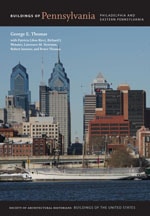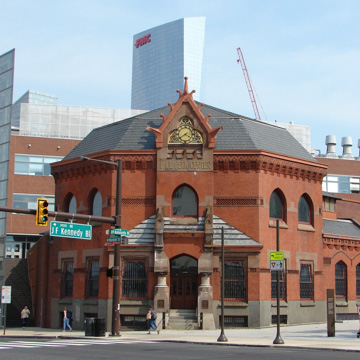You are here
Paul Peck Center (Centennial National Bank)
Built to serve the centennial crowds disembarking from the Pennsylvania Railroad's centennial station ( PH143), the former bank dominates its intersection the way Furness's army troop might have controlled an outpost of a battlefield. Stumpy columns simultaneously frame and compress the entrance, while large windows with pinched heads light the banking room and the rear office wing. Within, a lozenge-shaped banking room extends under a massive steel girder carried on cast-iron columns into a top-lighted rear office wing, extended in the Furness idiom by Frank Miles Day in 1899. Adapted as an alumni center for Drexel University and renamed the Paul Peck Center, it was extended in 1998 with an unfortunate rear wing that tries to out shout the front—but loses. Now containing some of the university's art collection, it is open by appointment, making it possible to see the restored Néo-Grec painted ceiling, long concealed above a dropped ceiling.
Writing Credits
If SAH Archipedia has been useful to you, please consider supporting it.
SAH Archipedia tells the story of the United States through its buildings, landscapes, and cities. This freely available resource empowers the public with authoritative knowledge that deepens their understanding and appreciation of the built environment. But the Society of Architectural Historians, which created SAH Archipedia with University of Virginia Press, needs your support to maintain the high-caliber research, writing, photography, cartography, editing, design, and programming that make SAH Archipedia a trusted online resource available to all who value the history of place, heritage tourism, and learning.






